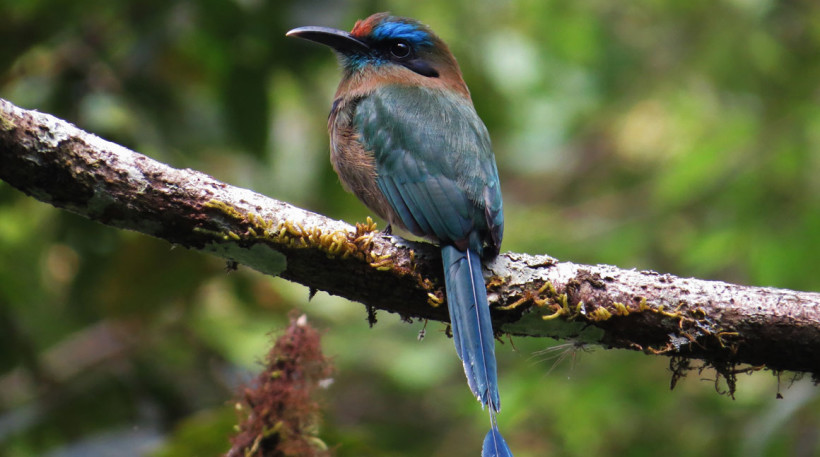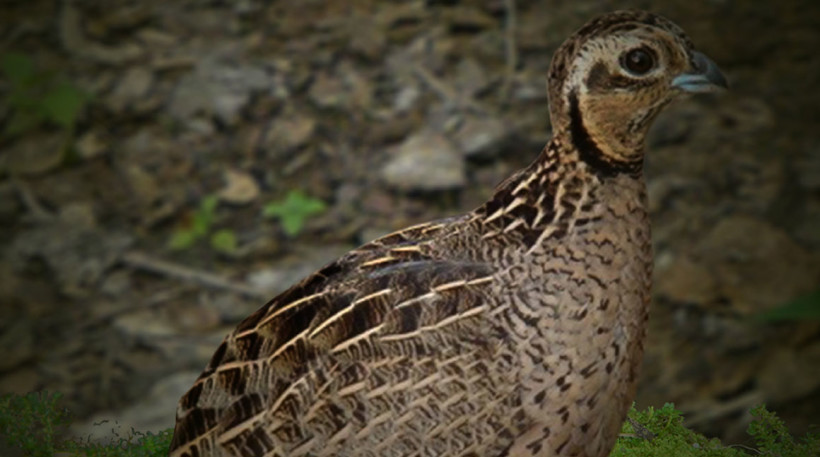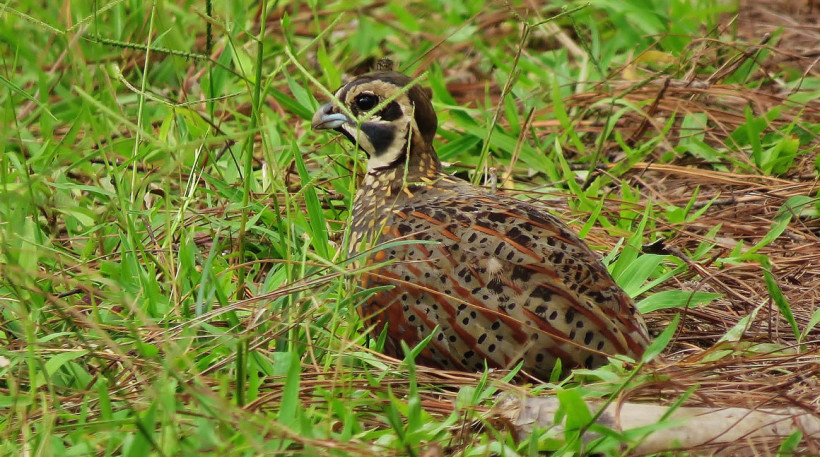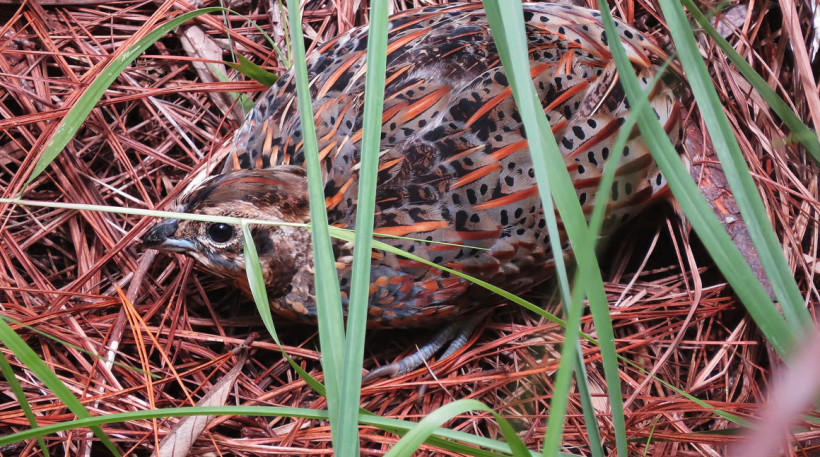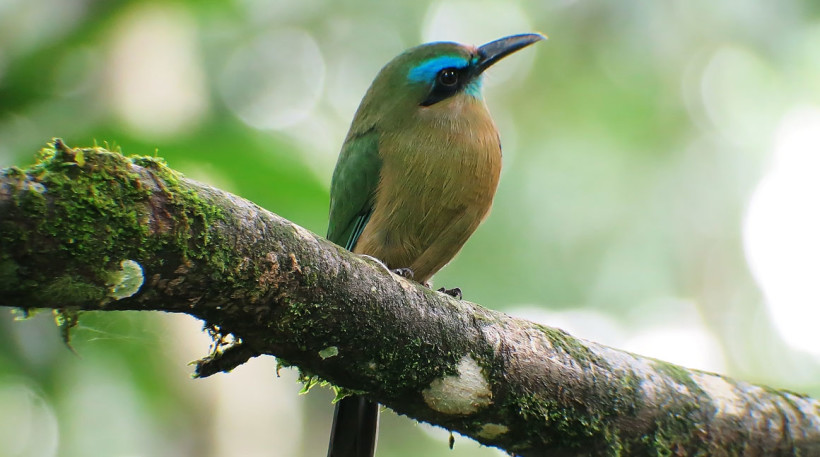Ocellated Quails, Motmots & Pico Bonito Lodge!
Honduras, still mostly off the beaten track, is a hidden birding gem in Central America. Many people do not realize that this small country is the regional leader in terms of the percentage of land set aside as national parks and preserves, surpassing even Costa Rica in this regard. Sitting astride the Northern Central America endemic region, this increasingly popular country also boasts an impressive diversity of regional endemics within its many ecosystems, such as Bushy-crested Jay and Green-breasted Mountaingem. In addition, several bird species are easier to see here than elsewhere in their range, such as Lovely Cotinga and Keel-billed Motmot. For those who love motmots, Honduras happens to be the center of diversity for this family. Our carefully designed itinerary targets most of the Northern Central America endemics as well as five species of motmots, including the rare and sought-after Tody and Blue-throated Motmots.
We begin this tour in the highlands above Lake Yojoa, targeting localized species such as Rufous-breasted Spinetail and Prevost’s Ground Sparrow, while also hopefully enjoying our first sightings of the colorful and charismatic Blue-diademed, Keel-billed, and Turquoise-browed Motmots. The cloudforests in the southern part of the country offer chances to observe the rare Fulvous Owl, the hallowed Resplendent Quetzal, the obscure Blue-throated Motmot, and more. As we continue our journey northward, we make a special stop near the town of La Unión for a couple days to seek the elusive Ocellated Quail. Afterwards we target the only strictly endemic bird of Honduras, the endangered Honduran Emerald. Saving the best for last, we finish the trip at the luxurious The Lodge at Pico Bonito – a site famous for its unique combination of excellent amenities and exceptional birding. We can often see the lodge’s signature species, the electric Lovely Cotinga, from the restaurant! Within the deeper forest trails we will keep a watch out for the fifth motmot species possible on this tour, the toy-like Tody Motmot. We schedule this tour in early spring, when bird activity is high and the weather generally dry.
Please note that the detailed itinerary below cannot be guaranteed as it is only a rough guide and can be changed (usually slightly) due to factors such as availability of accommodation, updated information on the state of accommodation, roads, or birding sites, the discretion of the guides and other factors.
Request more Info about this Tour
Itinerary (15 days/14 nights):
The tour begins around noon at the airport in San Pedro Sula, from where we head south to PANACAM Lodge in the mountains above Lake Yojoa. After we arrive we will have time for some initial exploration of the lodge grounds. The feeders usually attract Violet Sabrewing and White-bellied Emerald, while the forest edge usually draws in feeding parties of the stunning Keel-billed Toucan and Collared Aracari. We even have a good chance of encountering the near-mythical Keel-billed Motmot, which is unusually common here, on our first afternoon.
Overnight: PANACAM Lodge
We begin the day with some pre-breakfast birding near the lodge for the handsome Prevost’s Ground Sparrow and the muted Green-backed Sparrow, the first of many endemics of northern Central America possible on this itinerary. Afterwards we descend to the shores of Lake Yojoa, a large lake in the heart of Honduras. Here we scan the edges for wetland species such as Northern Jacana, Bare-throated Tiger Heron, and Ruddy Crake. White-throated Flycatcher, an Empidonax flycatcher with poorly understood migratory movements, also occurs on the marshy banks of the lake. The boardwalk at Los Naranjos Ecological and Archaeological Park winds through some secondary forest and forest edge, where we can catch up with some delightful Mesoamerican species such as Rufous-breasted Spinetail and Grey-crowned Yellowthroat. In the evening we will try to locate Mottled Owl, which often calls right near the PANACAM Lodge restaurant.
Overnight: PANACAM Lodge
Today we explore the trail system and new tower accessible from PANACAM Lodge, keeping a sharp eye and ear out for roving feeding flocks that may contain Cocoa and Northern Barred Woodcreeper, Buff-throated Foliage-gleaner, and Golden-crowned Warbler, as well as an assortment of migrant warblers. Afterwards we pack up and drive southward through a landscape of pine-clad mountains to arrive at our next lodge.
Overnight: Hotel La Casona, Marcala
The Opatoro-Guajiquiro highlands feature the highest-elevation forest accessible by road in Honduras, providing opportunities to observe several northern Central America endemics that are difficult to see anywhere else within their range. High on the list of priorities will be the stunning Blue-throated Motmot, a species which occurs only in a narrow strip of mountains that stretch from southern Mexico to Honduras. Other regional endemics that we shall seek here include Fulvous Owl, Green-throated Mountaingem, Black-throated Jay, Highland Guan, Black-capped Swallow, and Brown-backed Solitaire.
Overnight: Hotel La Casona, Marcala
After another morning in the Opatoro-Guajiquiro highlands to target any species we may still be missing, we make our way to La Tigra National Park high above the city of Tegucigalpa, the capital of Honduras. In the afternoon we will focus our attention on the road leading to La Tigra National Park, a mosaic of pine forest, pastures, gardens, and cloudforest. Large and noisy family parties of Bushy-crested Jay commonly frequent this area. Yellow-backed Oriole and Flame-colored Tanager, two strikingly colored birds, often accompany them, while brushy roadside verges provide habitat for the perky Rufous-browed Wren and the dapper Blue-and-white Mockingbird. Flowering bushes attract a variety of highland hummingbirds, such as the near-endemic Green-breasted Mountaingem and the more widespread White-eared Hummingbird.
Overnight: Los Gloriales Inn, El Hatillo
Established in 1980 as the first national park in Honduras, La Tigra National Park protects a large tract of cloudforest right on the outskirts of the bustling capital of Tegucigalpa. Within this verdant forest cloaked in moss and blowing mist a varied assortment of Mesoamerican specialties occur, such as Singing Quail, Mountain Trogon, and Black Thrush. Forest clearings and brushy areas often feature an abundance of flowers, which may attract some of the most distinctive and beautiful hummingbirds in Central America: Garnet-throated Hummingbird, Amethyst-throated Mountaingem, and the incredible Wine-throated Hummingbird. Finally, the spectacular Resplendent Quetzal, a bird venerated by the ancient Aztecs and Mayas due to its great beauty, also dwells in this forest. The subspecies found here is slightly larger with longer and broader ‘tail streamers’ than the one found in Costa Rica.
Overnight: Los Gloriales Inn, El Hatillo
After some early morning birding near the lodge for any outstanding species, we continue our journey north to Olancho, where we will be in position to see one of the most poorly-known birds in northern Central America, the Ocellated Quail.
Overnight: Hotel La Muralla, La Unión
Since the discovery of a large population in 2008 near La Unión, the rare and difficult Ocellated Quail is now perhaps easier to see in Honduras than anywhere else within its limited range. We will focus our time here on obtaining decent views of this shy inhabitant of pine-oak woodland, searching proven sites where this species is most often recorded. With a bit of luck and skill, we stand a good chance of seeing this grail bird. If we manage to see the quail well, we will explore the nearby cloud forest at La Muralla for species such as Ornate Hawk-Eagle, Unicolored Jay, and the ‘red-throated’ subspecies of Green Parakeet.
Overnight: Hotel La Muralla, La Unión
After some early-morning birding in the cloudforest of La Muralla, we continue northward to the small town of Olanchito in the Aguán Valley. Lying within the rain shadow of the northern coastal mountains, this isolated interior valley features an arid thorn-scrub forest of acacia and cacti that is home to several disjunct bird populations, such as White-lored Gnatcatcher and White-bellied Wren. By keeping a careful eye on the roadside verges in the afternoon and the following morning, we also hope to encounter the endearing and charismatic Lesser Roadrunner.
Overnight: Hotel Beverly, Olanchito
No bird illustrates the relative isolation and uniqueness of this thorn-scrub habitat more than the endangered Honduran Emerald, the only bird species endemic to Honduras. Rediscovered in 1988 after going unrecorded for several decades, this highly localized hummingbird is entirely dependent on the nectar of blossoming cacti, bromeliads, and other flowering plants. Although it is fairly common in this unique ecosystem, the rapid conversion of thorn-scrub forest to ranching and farming continues to threaten its existence. While we search for this species we should also turn up the secretive Lesser Ground Cuckoo. In the afternoon we depart for the Lodge at Pico Bonito.
Overnight: The Lodge at Pico Bonito, La Ceiba
Nestled at the base of a mountainous national park on the northern coast of Honduras, the Lodge at Pico Bonito combines first-rate accommodations, excellent dining, and superb birding opportunities. An assortment of flowering plants and fruiting trees right around the cabins, restaurant, and reception area entice a rich profusion of birds, including hummingbirds, warblers, tanagers, oropendolas, parrots, and orioles. Near the trailhead a strategically built tower offers prominent views of the forest, river, and mountains. From this lofty vantage point we will scan the forest canopy for the vividly blue Lovely Cotinga, the signature species of the lodge, as well as the immaculate White Hawk. Along the forest trails deep within the forest another suite of sought-after birds occur, including Central American Pygmy Owl, Chestnut-colored Woodpecker, Slaty-tailed Trogon, Northern Royal Flycatcher, Red-capped Manakin, and more. Owling around the lodge may allow us to observe Middle American Screech Owl and Great Potoo.
In addition, there are several sites away from the lodge that we visit during our stay. Reachable only via an 1890s train and rail line, the Cuero y Salado Wildlife Refuge protects a tract of mature mangrove forest. Once we arrive, we navigate the maze of waterways in search of up to five species of kingfisher, Sungrebe, Boat-billed Heron, and maybe even the rare Agami Heron. Mantled howler monkey and white-headed capuchin also may be encountered in this forest.
The Rio Santiago Nature Resort boasts an incredible feeder setup, attracting hundreds of hummingbirds of more than twelve different species, such as Green-breasted Mango, Scaly-breasted Hummingbird, Long-billed Hermit, and maybe even Band-tailed Barbthroat. The trail that runs behind this resort offers one of our best shots at the fifth possible motmot species on this tour, the incredible Tody Motmot.
Finally, the Lancetilla Botanical Garden offers opportunities to observe an impressive mix of forest edge species, including Great Antshrike, Rufous-tailed Jacamar, Black-headed Trogon, Blue Ground-Dove, and others.
Overnight: The Lodge at Pico Bonito, La Ceiba
Depending on flight departure times we may have some optional early-morning birding on the lodge grounds. Otherwise we transfer back to the international airport in San Pedro Sula, where the tour ends.
Price includes:
Meals, Accommodation, Guiding fees, Entrance fees, All transport while on tour, Tolls
Price excludes:
International flights, Items of a personal nature, e.g. gifts, Alcoholic drinks, Personal insurance, Gratuities



